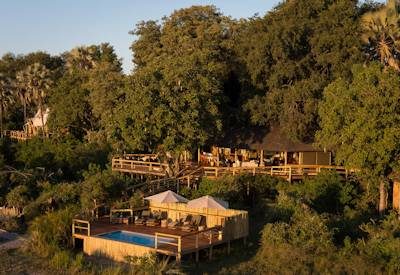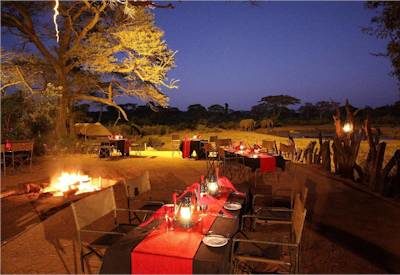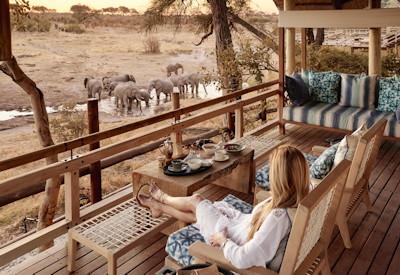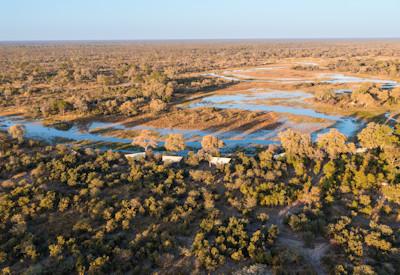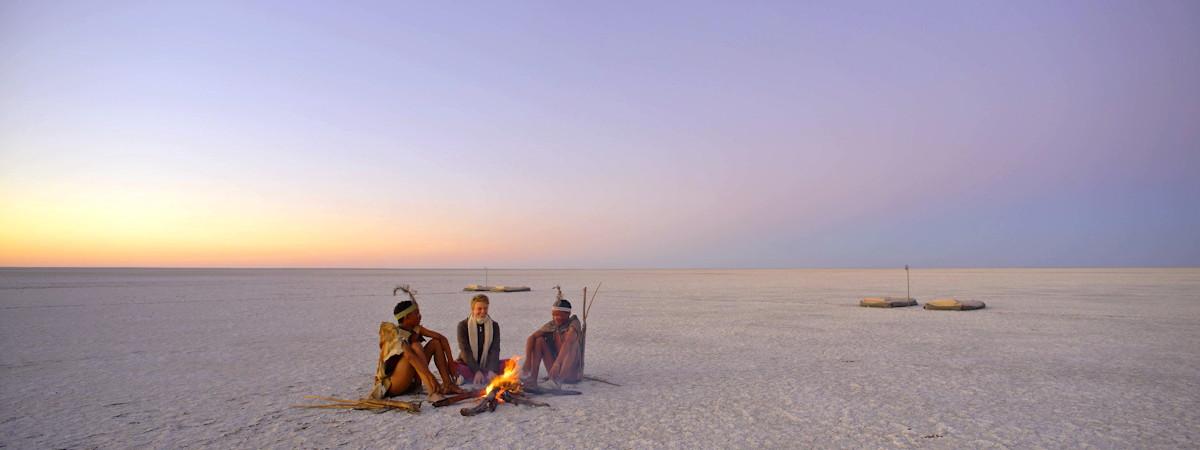
Makgadikgadi Pans
Visit The Makgadikgadi; One Of The World's Largest Salt Pans, A Unique Safari Destination
Makgadikgadi Pans of Botswana, a vast open lifeless land devoid of human habitation, one of the world's largest salt pan on the planet awaits. A truly special place that is only really accessible in the dry winter months visit the amazing Kubu and Kukome Islands for those breathtaking sunsets and sunrises.
Makgadikgadi Pans National Park is definitely one of the most unique places to safari when in Botswana. This vast area of salt pans is completely lifeless and devoid of any human habitation, making it a truly special place to visit. The best time to safari in the Makgadikgadi Pans National Park is during the dry winter months, when the conditions are perfect for exploring this unique landscape.
Kubu and Kukome Islands are two of the most popular places to visit. These islands are known for their stunning sunsets and sunrises, making them a must-see for any visitor to the area.
Yes, a vast area of the pans is not easily accessible, but for those who are willing to go off the beaten track, the experience is like nothing else.
With regards to Nxai Pan and the Nxai Pan National Park, we will, in the coming months, do a separate page. Nxai Pan offers a completely different experience and, therefore, should be on a separate page.
Makgadikgadi Pans Facts
- Size: 16 100km²
- When to visit the park: Mar - Sep is prefered; do not attempt to cross in the rainy season (Nov - May)
- Climate: Summer, hot with extreme daytime conditions (40°C and upwards). Winter is hot to mild during the day
- Rainfall: Between 450mm and 500mm per annum
- Altitude: 900m - 1000m above sea level
- Location: Eastern Botswana, east of Maun, just south of the A3 road (Maun to Nata)
- Accommodation: Lodges In The Kalahari Desert
Where are the Makgadikgadi Pans located?
The pans are located to the east when looking at a Botswana map, although, not too far east, think more along the lines of a central-eastern location, and one would be spot on. Around 100 kilometres from Maun and +- 30 kilometres from Nata.
Having said what we had said above, access to the Makgadikgadi will depend on what part you will be visiting. Will it be the Makgadikgadi National Park, Nwetwe Pan or Sua Pan? All three of these are far apart from each other; as an example, getting from Makgadikgadi Pans National Park to Sua Pan is one long day out and a few 100 kilometres.
To view the Makgadikgadi location from a Google Map, click here: Google Map - Makgadikgadi Pans
Information On the Makgadikgadi Pans
One of the world's largest salt flats, a vast open lifeless land, devoid of human habitation.
Once an ancient great lake in central Botswana and now a dried up lunar expanse, the Makgadikgadi Pans fill with water just once a year when the rains fall, attracting a plethora of game and birdlife to this region of Botswana. During the day, the dusty Makgadikgadi salt flats, with whirlwinds skirting across a seemingly endless desert, offers the best way to come face to face with true isolation.
The Makgadikgadi flood between January and March, if it rains enough. This causes grasses to burst into life, flamingos and water birds to arrive by their thousands to nest, and a great migration of countless zebra and wildebeest to arrive. When this happens, it is one of Africa's great wildlife spectacles. Unfortunately, this huge water spectacle becomes practically inaccessible by road at this time, but anyone fortunate enough to fly over the area during the wet season sees a water wonderland of incredible scenic beauty.
Game viewing here includes black-maned Kalahari lion, leopard, wild dog, cheetah, springbok, gemsbok, herds of wildebeest and zebra, brown hyena and spotted hyena, and eland and other antelopes.
Best Time to Visit the Makgadikgadi Pans?
A simple answer to this question is winter; the pans will be dry and easily accessed or driven over. In summer, the minute the salt pans get wet; they instantly become a no-go area; if one gets stuck, you may have to leave your vehicle as it becomes unrecoverable.
The same principle applies to the National Park area, with winter being best for wildlife and accessing different areas of the park.
A bonus of summer when the pans are flooded is the 1000's of flamingoes that are viewable, especially from the Nata Bird Sanctuary.
Main Attractions Of the Makgadikgadi Pans
- Migrations of wildebeest and zebra during the rainy season
- Kubu Island and Kukome Island
- Boteti River on the western side of the Pans from in from the Okavango Delta
- Seasonally home to thousands of flamingos
- A night out or two wild camping on the pans themselves
- Jacks Camp, San Camp and for the more budget-orientated Planet Baobab
- Driving across the Pans when they are dry
The Makgadikgadi Salt Pans are a vast, open and lifeless land located in eastern Botswana. Once an ancient great lake, the salt pans fill with water just once a year when the rains fall, attracting a plethora of game and birdlife.
During the day, the dusty Makgadikgadi offers the best way to come face to face with true isolation.
Remember; The best time to visit the Makgadikgadi Pans is winter when the pans are dry and easily accessed or driven over.
Main attractions include the migrations of wildebeest and zebra during the rainy season, Kubu Island and Kukome Island, the Boteti River on the western side of the pans, and the chance to drive across the pans when they are dry.
So what are you waiting for? Combine the Makgadikgadi with the Okavango Delta, Moremi Game Reserve, Chobe National park and maybe Victoria Falls for that perfect Botswana safari itinerary.
- Kwetsani Camp
Kwetsani offers just five spacious, tree-house thatch chalets, each designed to blend seamlessly into the natural surroundings. These elevated chalets provide breathtaking views of a vast Okavango floodplain, which is home to an array of wildlife, including herds of Lechwe and Wildebeest.
The area is also a paradise for bird enthusiasts, boasting some of the most remarkable birdlife in Botswana. Whether you’re seeking tranquility or adventure, Kwetsani offers an intimate and unforgettable safari experience in the heart of the Okavango Delta.
- Elephant Valley Lodge
Elephant Valley Lodge is one of the most popular accommodation choices when exploring the northern Chobe National Park region in Botswana. Nestled in a stunning natural setting, this lodge offers guests an unforgettable safari experience surrounded by incredible wildlife.
Elephant Valley’s warm hospitality, cozy accommodations, and convenient location make it an excellent choice for both first-time and seasoned safari-goers.
- Savute Elephant Lodge
Belmond Savute Elephant Lodge has 12 luxurious safari suites on raised wooden decks overlooking the Savuti Channel, one of the most popular lodges in the Chobe National Park that we offer, and for a good reason.
Depending on the flood levels, safari activities at Savute Elephant Lodge include; game drives (morning and afternoon) as well as tours to the nearby rock paintings.
- Moremi Crossing
Moremi Crossing is a hidden gem on a scenic, palm-fringed island near Botswana's wildlife-rich Moremi Game Reserve. It's an ideal spot for exploring the stunning landscapes and wildlife of the Okavango Delta.
The camp is a recent addition to the area, featuring 16 beautifully designed tented suites. Each suite offers stunning views of the Okavango's tranquil waters, creating a serene experience for guests. Every detail is thoughtfully crafted to ensure comfort and luxury.
- Koro Island Camp
Koro Island Camp is situated on the Central Tuli Block of Botswana and is only accessible by an intricate suspension bridge over the Limpopo River.
It is a classic safari camp, offering only four en-suite Meru safari tents for guests to experience the true African wilderness in comfort.
Guests can partake in various activities such as game drives, bird watching and walking trails, perfect for small groups of explorers.
Experience the wonders of nature in an unforgettable escape at Koro Island Camp!
- Okavango Explorers Camp
Set in Botswana's wilderness, Okavango Explorers Camp brings the spirit of 1920s safari exploration to life. Located in the Okavango Delta, this exclusive camp offers a blend of adventure, tranquillity, and intimacy.
Whether you're seeking thrilling wildlife encounters or peaceful moments in nature, the camp provides an authentic connection to Africa's extraordinary landscapes.

